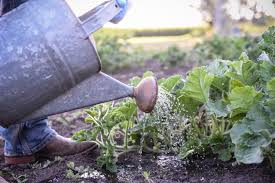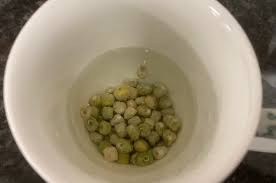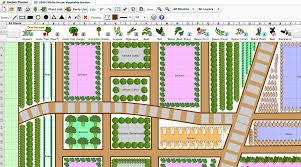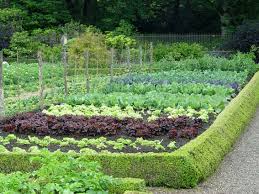Gardening is an ongoing journey of discovery, where small tweaks can make a big difference in both effort and rewards. Whether you’re trying to save time, increase yields, or reduce costs, these gardening hacks are sure to help you achieve a more successful vegetable garden.
1. Use a Garden Tool as a Measuring Stick
Repurpose your long-handled tools, like hoes or garden forks, as measuring devices. Simply lay the tool on the ground, place a tape measure alongside, and mark measurements along the handle with a permanent marker. This way, you’ll always have a built-in ruler when spacing plants properly.

2. Long-Lasting, DIY Plant Labels
Say goodbye to fading plastic labels. Rub old labels with sandpaper to remove worn-out ink, making them reusable for years. You can also get creative by upcycling household items: cut yogurt pots into strips, repurpose broken roof tiles, or use smooth stones to create natural, eco-friendly plant markers. Write on them with permanent markers or white paint for durability.
3. Protect Your Plants from Frost
If you don’t have cloches but need to protect your plants from a late frost, try using terracotta pots. Turn the pots upside down and place them over your seedlings. They act as a protective barrier against light frost but make sure to remove them in the morning for sunlight exposure.

4. Hands-On Pest Control
Aphids can be a nuisance for organic gardeners. Instead of using harsh chemicals, try wrapping sticky tape around your hand (sticky side out) and patting the infested leaves. Focus on the undersides where aphids like to hide. You can also plant aphid-attracting species like nasturtiums nearby to draw pests away from your main crops.
5. Conserve Water with Plastic Bottles
For thirsty plants like cucumbers and tomatoes, try a DIY water reservoir using plastic bottles. Drill small holes in the bottle cap, cut off the bottom, and bury the bottle upside down near your plant. Refill the bottle as needed, and the water will slowly seep into the soil, keeping your plants hydrated.
6. Reuse Kitchen Grey Water
Reduce your water bill by reusing the water from your kitchen. Water from boiled vegetables, after cooling, can be used to nourish your garden. Just ensure you’re using plant-based dishwashing detergent, as soapy water from greasy pots can harm your soil.
7. Soak Seeds for Faster Germination
For seeds with tough coats, like peas and sweet peas, soaking them in lukewarm water overnight speeds up germination. This pre-treatment softens the seed coat, allowing the seed to sprout faster once planted. Just ensure the soil temperature is warm enough to prevent seed rot.

8. Make Biodegradable Pots from Cardboard Tubes
To avoid disturbing the delicate roots of beans and peas, create your own biodegradable pots. Simply cut a cardboard tube into three flaps, fold them inward to form a bottom, and fill with soil. Plant your seeds and, when ready, plant the entire tube directly into the soil. The cardboard will decompose, allowing the roots to grow freely.
9. Maximize Space with Vertical Gardening
Running out of room in your garden? Go vertical! Use climbing and trailing plants like beans, tomatoes, or strawberries. Repurpose materials like guttering to create vertical planters that attach to walls or fences. Drill holes for drainage, add a moisture-retentive growing medium, and you’ve got an efficient, space-saving solution.
10. Use Garden Planning Software
Garden planning software is a game-changer for organizing your garden layout. It helps you plan your crops, timing, and rotation, ensuring you maximize your space and reduce the risk of pests and diseases. By visualizing your garden, you can plan succession planting and fill in any gaps throughout the growing season.

These simple yet effective hacks can transform your gardening experience, saving time and effort while boosting your yields. What’s your favorite gardening tip? Share it with us in the comments!
